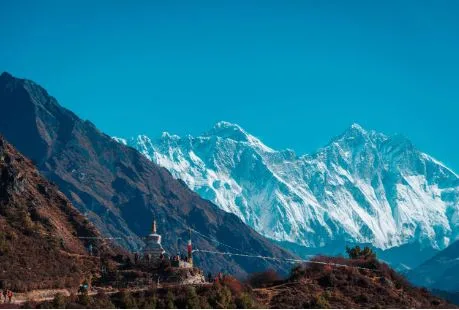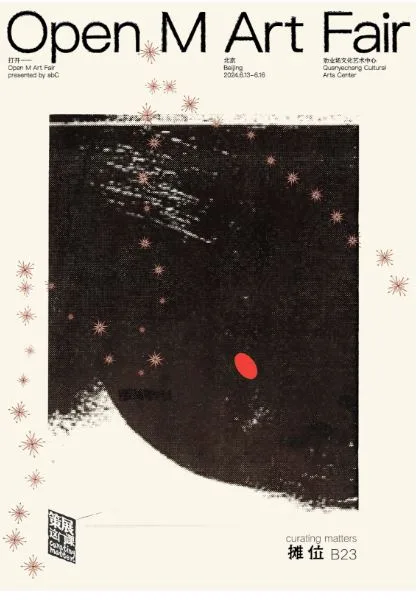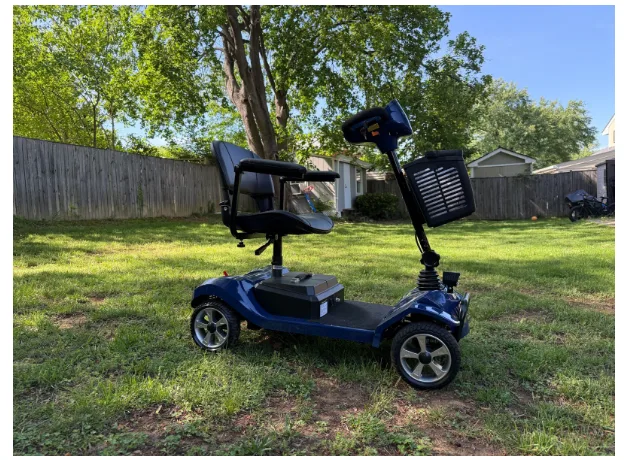Four Peaks, One Journey: Everest, Pikey, Ghorepani & Khopra
Overview
Four stunning treks, one heart-touching journey—this Nepal adventure takes you across Everest Base Camp with Two Passes, Ghorepani Poon Hill, Khopra Ridge, and Pikey Peak. Each trail shows different faces of Himalayan beauty, culture, and high-altitude thrill. This is not just trekking; it is a full mountain life experience. From iconic Everest paths to hidden village trails of Khopra, all bring different stories. Let’s go deep into this Four Peaks adventure that shows Nepal at its most raw, wild, and wonderful.
Everest Base Camp with Two Pass Trek in Nepal
The Everest Base Camp with Two Pass Trek in Nepal is the real dream of adventure lover. Not just going to Everest Base Camp but also crossing two high passes—Cho La and Renjo La. This makes the trek more challenging and more beautiful. First you go from Lukla to Namche Bazaar, then to Tengboche, Dingboche, Lobuche, and then Everest Base Camp. After EBC, the trek moved to Cho La Pass and reached Gokyo Lake. Then cross Renjo La to back down toward Namche again. Every day different mountains and different views. Big peaks like Ama Dablam, Everest, Lhotse, and Nuptse follow you. Also beautiful sunrise from Kalapatthar and Gokyo Ri. This trek needs good stamina and love for high mountains.
Ghorepani Poon Hill Trek – 3 Days
The Ghorepani Poon Hill Trek is a short but heart-touching trek. Only 3 days, but full of green forest, village life, and sunrise magic. Start from Nayapul, go through Tikhedhunga, then Ghorepani. On the second morning, hike early to Poon Hill for sunrise. The whole Dhaulagiri and Annapurna range turns gold. The trail is full of rhododendrons if you go in spring. Trek is easy and best for beginners or if you want a small taste of the Himalayas. The tea houses are very friendly, and the food is simple but tasty.
Khopra Ridge Trek
One hidden gem trek in the Annapurna region. Not many tourists, but the views are more powerful than some famous treks. Start from the Ghandruk or Ghorepani side and go up toward Khopra Ridge Trek. On the way you pass a beautiful forest and a small village, then reach a high ridge. Khopra Danda offers an unreal view of Annapurna South, Nilgiri, and Dhaulagiri. From Khopra you can do a day hike to Khayer Lake, sacred for local people. The trail also shows yak pastures, stone shelters, and deep silence. Not hard like EBC, but still gives me a strong memory.
Short Pikey Peak Trek
This trek is famous because even Sir Edmund Hillary says the Pikey Peak sunrise was the best in all the Himalayas. The short Pikey Peak trek, only 5-6 days, and located in the lower Solu region. You can start from the Dhap or Jiri side and climb up slowly through forests, monasteries, and small Sherpa villages. On top of Pikey Peak, there is a 360-degree view of the whole Himalayan chain—from Kanchenjunga to Everest. Very peaceful trek, less people, more local life. Great for people who want real Sherpa culture with light adventure.
History of These Treks
Each trek holds an old story and tradition. The Everest trail was used by Sherpa and yak traders for centuries before it became world-famous after 1953, when Hillary and Tenzing reached Everest. Ghorepani was once a village for horse traders; now it’s famous for mountain sunrises. The Khopra route was made by the local community to give an alternative to the Annapurna base camp. It helps rural villages earn money and protect nature. Pikey Peak’s name comes from the Sherpa deity, and local people climb it for worship. These trails are not just made for tourists—they are born from local life, history, and spirit.
These Four Treks in One Journey Are Possible
Yes, doing all four in one trip is possible if you have time, around 30 to 35 days. The best way is to start from Pikey Peak first to warm up, then move to Everest Base Camp with the Two Pass trek. After that, come to the Pokhara side and do the Ghorepani and Khopra Ridge treks. This way, your body adjusts slowly with altitude, and you enjoy all regions—Everest and Annapurna both. Some people do the reverse also. I need an internal flight from Lukla to Kathmandu, then a drive or flight to Pokhara. The plan must be smart and have good buffer days for rest and weather.
Routes and Highlights
- Pikey Peak: Dhap – Jhapre – Pikey Base – Pikey Peak – Junbesi – Phaplu. Highlights: Sunrise from Pikey Peak, old monasteries, and Sherpa village.
- Everest Two Pass Trek: Lukla – Namche – Tengboche – Dingboche – Lobuche – EBC – Cho La – Gokyo – Renjo La – Namche – Lukla. Highlights: Base Camp, Kalapatthar, Cho La, Gokyo Lake, Renjo La, and Everest views everywhere.
- Ghorepani: Nayapul – Tikhedhunga – Ghorepani – Poon Hill – Tadapani – Ghandruk. Highlight: Rhododendron forest, village stay, sunrise from Poon Hill.
- Khopra Ridge: Ghandruk – Tadapani – Bayeli – Khopra Ridge – Swanta – Ghorepani. Highlight: Khayer Lake, Annapurna South view, peaceful trail.
Best Time to Visit All Treks
The best season is two times a year—March to May (spring) and October to November (autumn). Spring has flower blooms, and the rhododendron forest is bright. Autumn has a clear sky and strong mountain views. During monsoon season (June to August), trails become slippery and cloudy. In winter (December to February), some parts of high treks like Cho La Pass or Renjo La can be closed with snow, but Pikey and Ghorepani are still possible. If you want fewer people, choose early March or late November.
Food and Accommodation
On all these treks you get a teahouse stay. Simple rooms, mostly twin beds, blankets available. In the Everest region and Ghorepani, lodges are more developed with menus, wifi, and charging options. Food is mostly dal bhat, momo, noodle soup, fried rice, and pancake. In Khopra and Pikey, more basic food, but tasty and local, like potato curry, yak cheese, and boiled egg. Carry your own snack, like dry fruits or energy bars. Drink safe water—bring a purification tablet or use boiled water from the lodge.
Culture and Local People
Each trek shows a different ethnic group and culture.
- Everest: Sherpa people. Buddhists follow lamas and live mountain life.
- Pikey: Also in the Sherpa region. More traditional, with many monasteries and local rituals.
- Ghorepani and Khopra: Gurung and Magar people. Mix Hindu and Buddhist. Dance, song, warm welcome, village lifestyle.
People are simple, hard-working, and respectful. You can join evening prayer in the monastery, drink butter tea, and even stay in a homestay to learn real culture.
All Other Things Needed for Tours
- Permits:
- Everest Trek: TIMS, Sagarmatha National Park Permit, Khumbu Municipality fee
- Ghorepani and Khopra: Annapurna Conservation Permit (ACAP), TIMS
- Pikey: Lower Solu permit is sometimes not needed, but TIMS may be required.
- Gear:
- Good hiking boots
- Warm jacket
- Sleeping bag (especially in Khopra or high pass)
- Headlamp, walking stick, water purifier, sunscreen
- Guide & Porter: Very helpful, support in hard trails, and local knowledge.
- Insurance: Must take insurance that covers high altitude and emergency rescue.
- Fitness: Train before the trip. Walk daily, and practice uphill and breathing.
- Cash: No ATM in the mountains. Bring enough cash from Kathmandu or Pokhara.
Conclusion
This Four Peaks journey is not just about walking in the mountains—it is about living, feeling, and connecting with the high Himalaya. Every trek gives you a new story, a new landscape, and a new heart-touching moment. From the tallest Everest to the peaceful Pikey, from the golden sunrise of Poon Hill to the silent lake of Khopra, this journey became a life memory. All levels of trekkers can do it with a proper plan and a good local guide. Nepal is calling again and again with its timeless beauty. Just answer the call and take this journey.
FAQs
Q1: How many days do you need to do all four treks?
A: Around 30–35 days are needed with a buffer for rest and travel between regions.
Q2: Can a beginner do this trip?
A: If I have good fitness and go slow with a guide, yes. It’s best to do Pikey and Ghorepani first.
Q3: How difficult is the Everest Two Pass trek?
A: It’s moderate to hard. Cross two high passes; you need strong legs and good acclimatization.
Q4: Do I need a guide and porter?
A: Not mandatory for all treks, but very helpful. Especially for Everest Two Pass and Khopra Lake.
Q5: What kind of weather to expect?
A: Clear and dry in autumn, cool and blooming in spring. Nights are always cold in high places.
Q6: Can I combine Khopra and Ghorepani in one trail?
A: Yes, it’s nearby and connected. Many trekkers do both in one loop.
Q7: What to eat during the trek?
A: Mostly Nepali dal bhat, noodle, momo, pancake, tea, and rice dishes.
Q8: Is altitude sickness a big problem?
A: Only in the Everest area. Going slow, drinking water, and taking a rest day helps prevent it.







